‘Never travel without a good book and a corkscrew’
Train expert Mark Smith has seen the world via rail and shares his tips for the increasingly popular mode of transport.
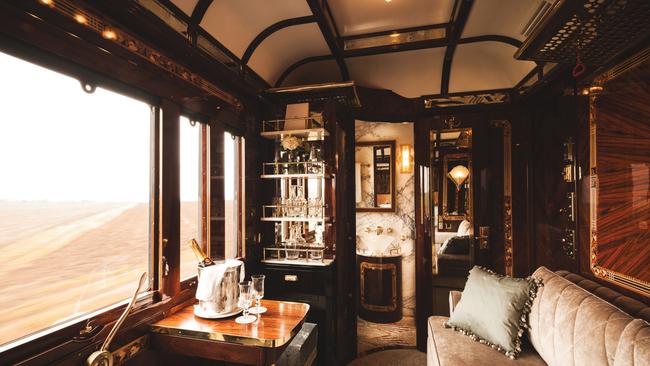
For Mark Smith, travel has always been more about the journey than the destination. The founder of acclaimed train-travel website The Man in Seat 61 began gravitating towards his favourite mode of transport in his early teens. School trips by rail from Britain to the south of France and the Soviet Union – including a stop in a divided Berlin – whet his appetite for more.
He began working for British Rail in the 1990s, initially as a station master, and progressed through various jobs in the railways. He launched his website, named for his preferred seat on the Eurostar, more than 20 years ago, and it became so popular he decided to devote himself to it full-time in 2007.
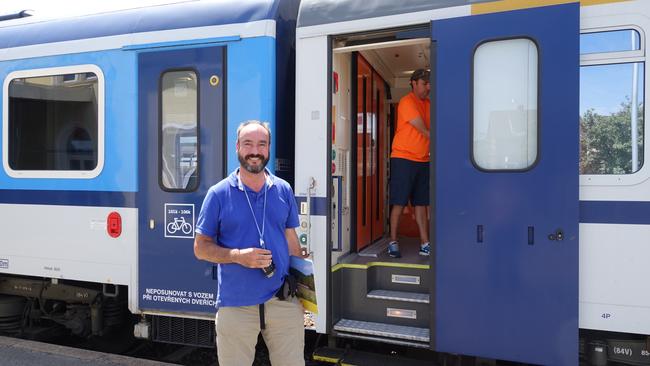
In recent years, Smith has witnessed a huge surge in interest in train travel. “When I started Seat 61, people would say they were taking the train because of a flying phobia or medical restriction, or they simply liked trains,” he says. “Now, they say they’re fed up with the airport and airline experience, and they want to cut their CO2 emissions.”
Smith’s obsession has taken him all over the world by rail, from Turkey, Japan and Morocco to Ukraine, Russia, Jordan and Syria. His longest journey to date was from London to Nagasaki via Moscow and the Trans-Siberian Railway.
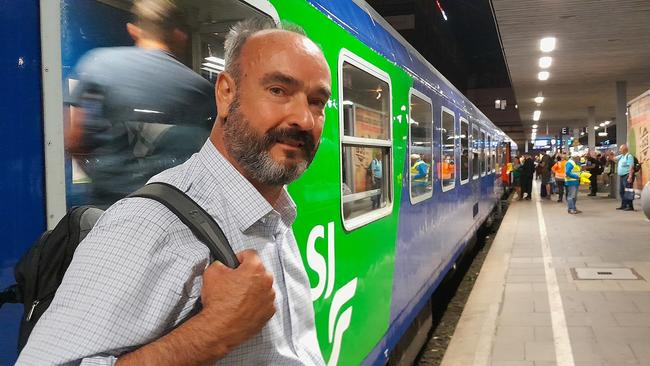
“Moscow to Vladivostok was seven solid days of birch trees – even I was going stir-crazy by the time we reached the Pacific,” he recalls.
His overland rail journey to Hong Kong was an entirely different experience. “There was a party atmosphere on the Trans-Mongolian Express from Moscow to Beijing, with Russians, Chinese and many Westerners on board. The scenery varies from Siberian birch forests to Mongolian desert with camels and yurts to Chinese mountains, passing through sections of the Great Wall. Never a dull moment.”
My best meal on a train
British operator Great Western Railway offers Pullman Dining on several of its scheduled trains between London and Devon or South Wales. It’s as good as any land-based restaurant – scallops to start, a superb fillet of beef served with an excellent French red wine as the train runs along the Dawlish coastal line with views over the English Channel, then the estuary of the River Exe.
My tips for train-travel newbies
Wherever you’re travelling – within Europe, the US, Thailand, Vietnam, Egypt – before booking a flight, see if there’s an overland alternative. Google for the train or ferry operator’s own website; it will usually have the cheapest prices, no booking fee, and maximum features such as seat selection. Overland travel often needs more effort, but you get so much more out. Oh, and never travel without a good book and a corkscrew.
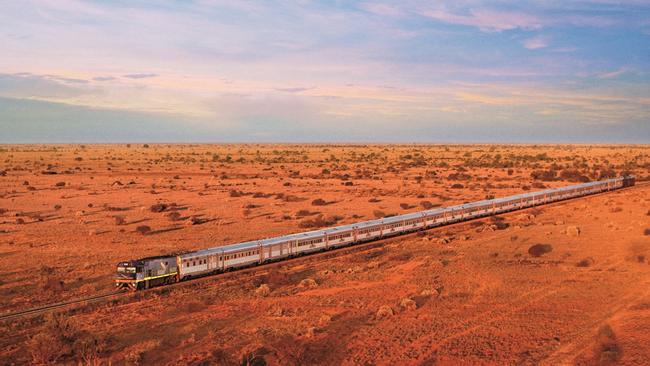
On Australian train trips
I loved The Ghan and Indian Pacific – classic journeys, if now somewhat pricey. I didn’t know what “nothing” looked like until I crossed the Nullarbor Plain (pictured). I’ve slept my way from Melbourne to Sydney in an XPT sleeping car. It’s crazy that the new trains about to enter service will not have any sleepers. If some entrepreneur bought a modern sleeper train like those being built for the Austrians, I think a night train between these two cities would do very well.
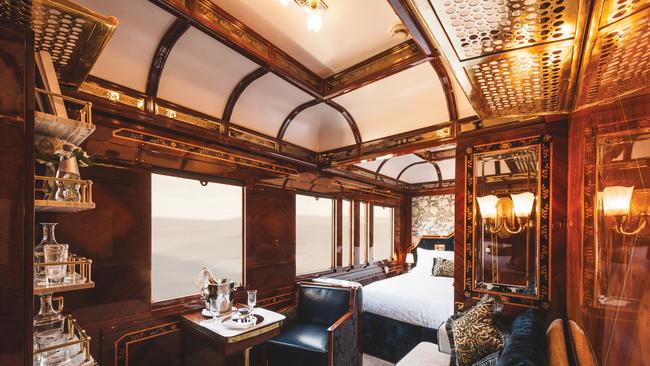
Love on the tracks
In 2003, I took the luxurious Venice Simplon Orient-Express (pictured) with my Dutch girlfriend of six months. I needed to research it for Seat 61 and they had a 25 per cent discount. We set off from London to Verona by beautiful 1920s British Pullman cars to Folkestone, then historic French Wagons-Lits from Calais to Italy. The food was superb, service immaculate, beds unbelievably comfortable. We still disagree about who said what to whom. I only remember the important fact that it all took place in the corridor of S-type sleeping-car 3425, built in 1927. But somewhere in a snow-swept Brenner Pass between Austria and Italy, Nic and I got engaged. Here I am 20 years on with a wife, two kids, two cats and one small cockapoo (spoodle). Powerful magic, that train!
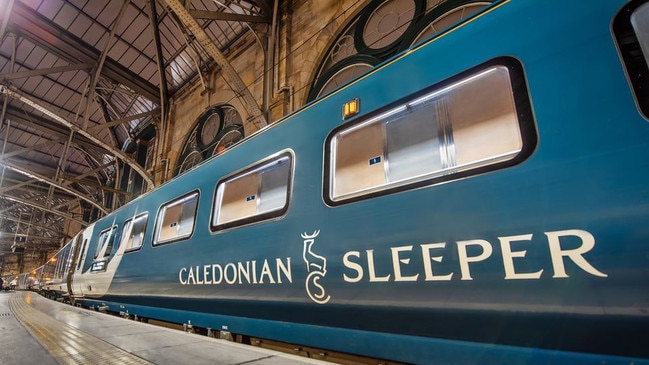
All-time favourite
London to Fort William on the Caledonian Sleeper is not only a time-effective way from London to the wonderful West Highlands of Scotland, it’s an experience, with cosy sleepers and convivial lounge car. Leaving the Big Smoke, you speed along a busy six-track main line at 130km/h and wake on the West Highland Line, Britain’s most scenic rail line, doing 65km/h on a twisting single track with deer bounding away from the train. From £170 ($330) with a single-bed sleeper, it’s not even that expensive.
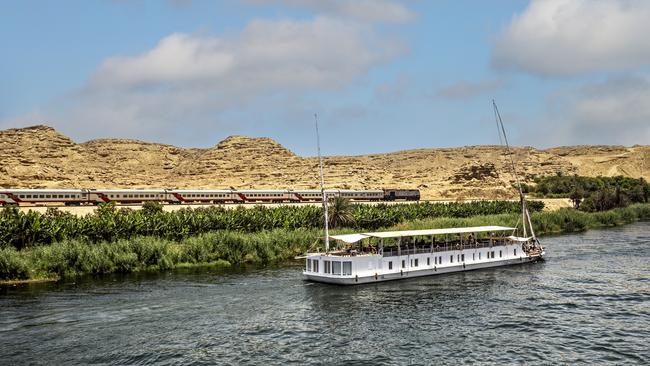
My strangest rail journey
In Aswan, Egypt, I was told the aircon express to Luxor would be two hours late, so I climbed aboard a run-down 2nd/3rd-class local train. It was dusty, dirty, broken and slow. School kids boarded, one sat with me, and made me read his English textbook out loud: “My farm has 80 fellahin (an Egyptian peasant), how many fellahin does your farm have?” They left, and a young man got on. His opening line was: “I like whisky. You like whisky?” He was a barman on a Nile cruise boat. The scenery along the Nile valley was breathtaking; viewed without aircon through the dirty double-glazing, it turned out to be one of my most memorable train rides.
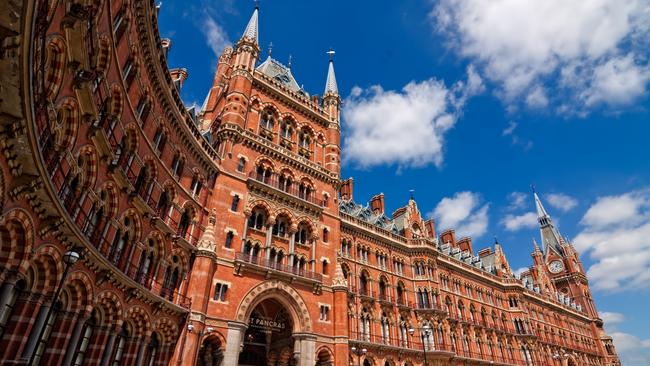
Best arrival/departure point
London St Pancras is a gothic masterpiece, which incredibly only narrowly escaped demolition in the 1960s. It was saved by a campaign led by poet laureate John Betjeman; his statue resides on the upper level of today’s station, gazing up at William Barlow’s magnificent trainshed of 1864. The station’s 2007 transformation from run-down terminus to Britain’s premier international station is a textbook example of how to combine old and new into something special.
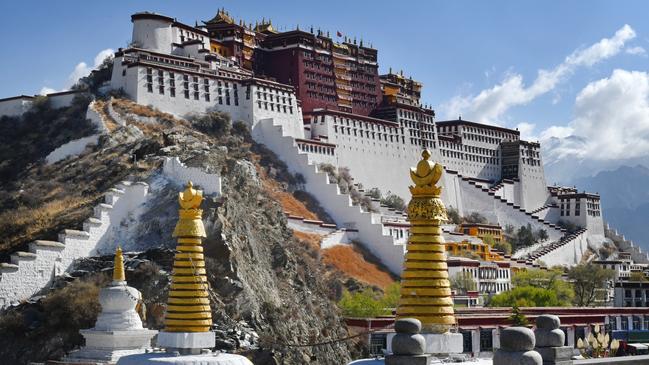
On my bucket list
A few years ago, I was all set to take the direct sleeper train from Beijing to Lhasa (pictured) on the railway to Tibet, the highest mainline railway in the world. The Tibet permit rules changed without notice, as they often do, and it remains unfinished business.





To join the conversation, please log in. Don't have an account? Register
Join the conversation, you are commenting as Logout